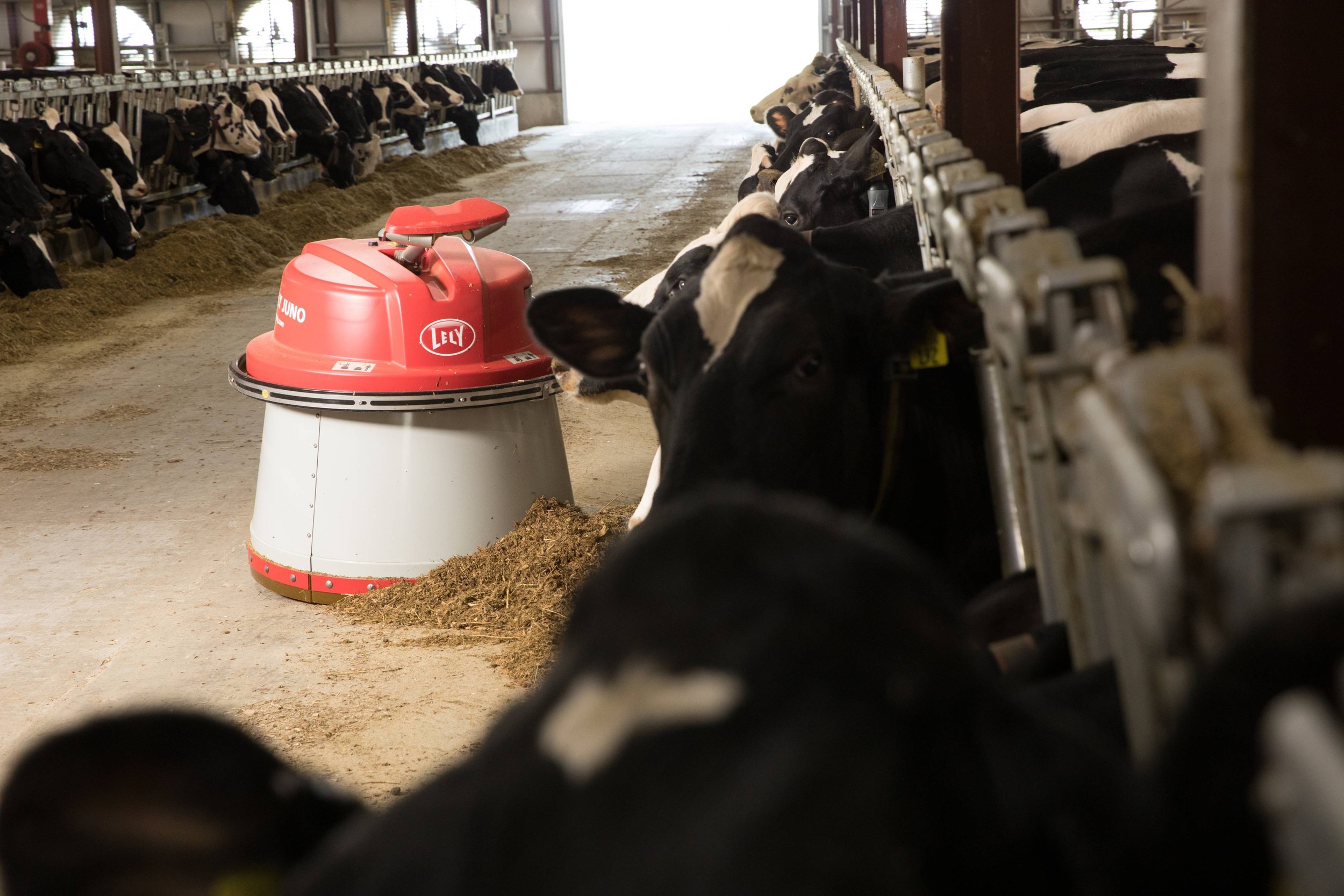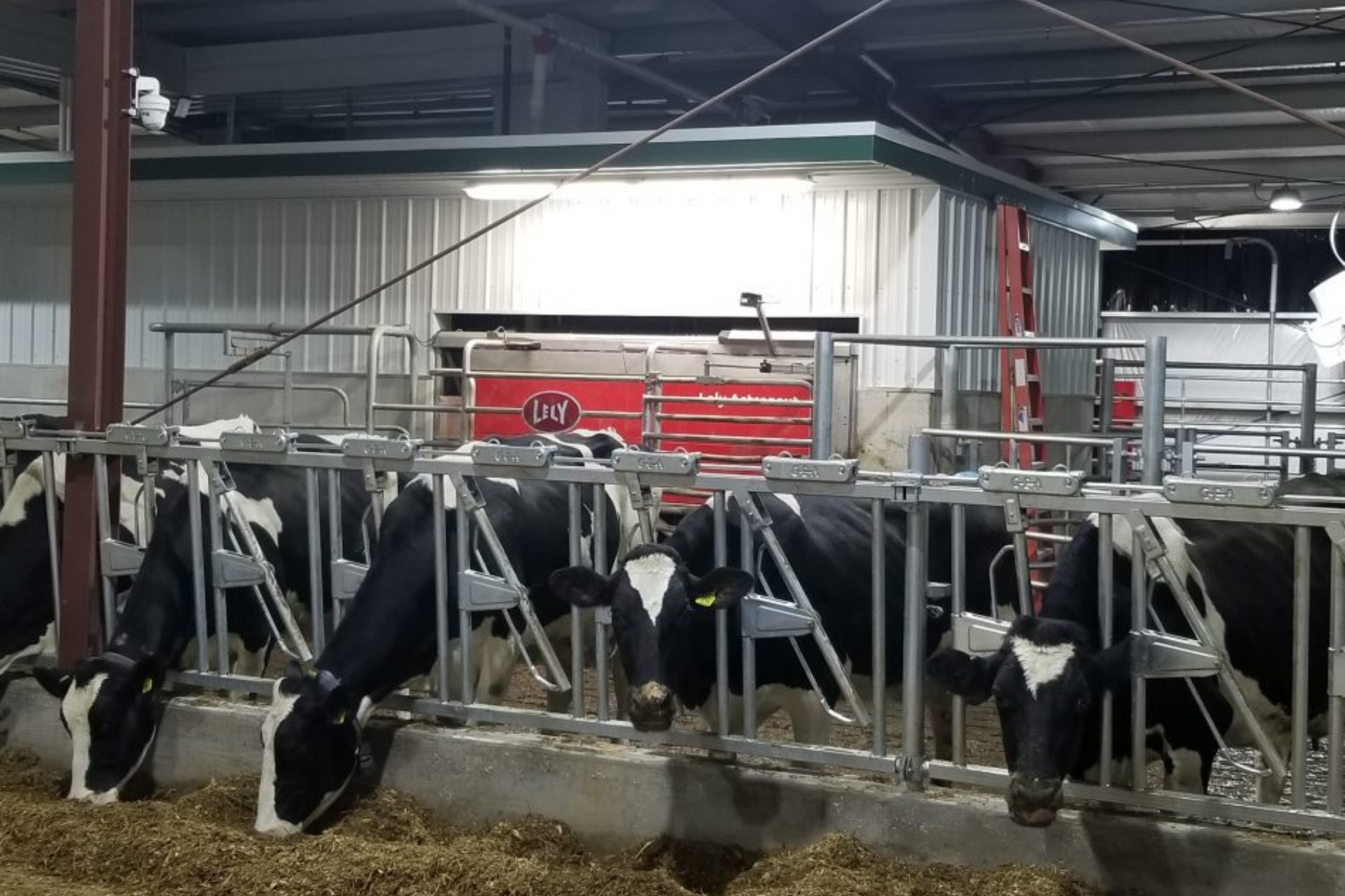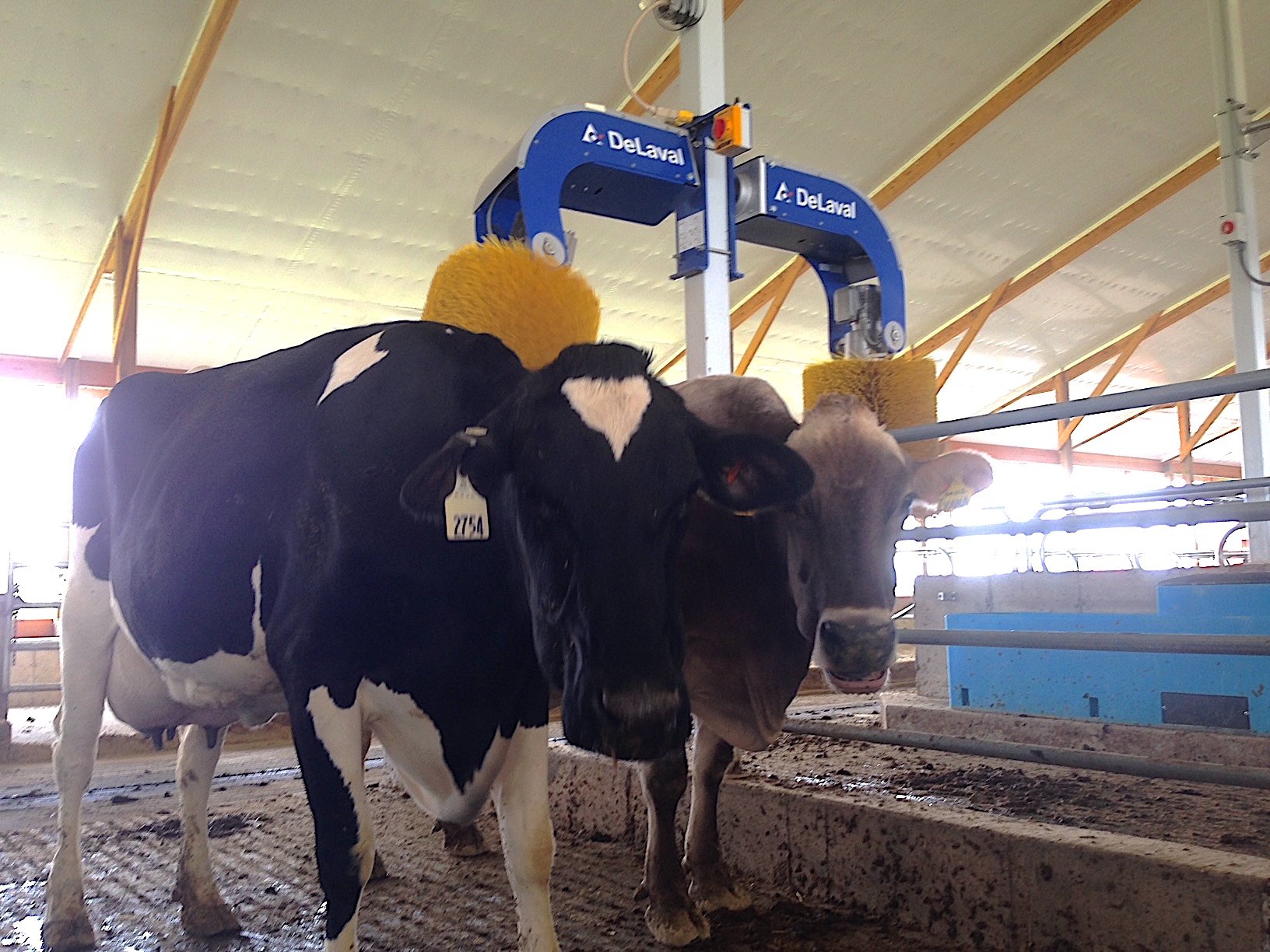How Robots are Improving Life for Dairy Cows & Farmers
Editor’s note: We previously shared a story about how robots are being used in making cheese, today we share how robots are being used in the dairy with cows.
Tina and Anna Hinchley
Happy and healthy cows produce more milk. And technology and robots keep cows happier and healthier. “Some of the girls (cows) will go hang out, closer to the robots,” says Tina Hinchley, who owns Hinchley’s Dairy Farm, in Cambridge, WI, with her husband Duane and her daughter Anna.
The Hinchley family got into robots and technology when Anna was studying dairy science at UW-Madison. Anna, who graduated in 2020, had the chance to work with a veterinarian and professor who was evaluating robot farms. “She brought back all the knowledge, and asked, ‘Can we get robots?’” Tina recalls.
Upgrades & Robots
Lely robot photo credit Lely
Tina and her husband checked out the farms for themselves, and they decided to invest in a new facility with Lely robots. The new dairy facility has water beds for the cows.
They have a robot that removes the manure from their 240 milking cows. “Cows eat about 100 pounds a day, and what goes in, comes out,” she says. “We have these little robots that are like poop Roombas, that go around and keep the floors nice and clean for the cows.”
They also have misters and tunnel ventilation to keep the cows cool in summer, and there are sensors that turn on the mist if it gets too warm. “There’s also a big, giant claw machine, and it mixes and puts out feed to the cows, and it goes out about every other hour to see how the food is doing,” says Anna.
Hinchley cows
The cows each have sensors so that the Hinchleys can check their vitals. The sensors also are activated when the cows are milked by the milking robot, and it keeps track of how much milk they’re producing. “It gives us a huge amount of information so we can manage them better,” Tina says. “We can see who the girls are who need extra attention.”
The farm has also switched over to a new system, which alerts them if a cow is ready to give birth or if she is having a problem before or after birth. “Having technology doesn’t mean we leave them alone,” Tina explains. “We have to keep an eye on the girls. It’s an office full of women and sometimes they’re not so nice to each other, and if we separate them, we do it because no one likes to be bullied.”
Milking Robots at Marieke Gouda
Marieke Gouda
These innovations don’t just help the cows or increase milk production. “These innovations not only make it easier on the cow, but on the dairy farmer,” says Marieke Penterman, who owns Marieke Gouda, an award-winning farmstead creamery and dairy with her husband Rolf. “This is saving a lot of dairy farms and making it more interesting for the next generation to take over. If these dairy farmers don’t have someone to take over the dairy farm, it’s going to be really devastating on our kitchen table.”
Quality of Life Improvements for All
Marieke's cow spa
Penterman, whose farm has about 400 cows, grew up on a dairy farm in the Netherlands. “My parents never went on a vacation, and then you have the responsibility of milking twice or three times a day, and you have to feed the cows, rain, shine, snow or freezing rain.” Penterman’s farm is vastly different from the one she grew up on. “We call the barn the cow spa,” she says.
When the cows come into be milked, the system immediately recognizes each cow. “We milk them separately, but once we had a cow who was super happy and hyper and jumped over the gate, and the system recognized her,” she says.
Cows at Marieke Gouda
The new technology makes the milking and care of the cows less labor-intensive, which not only is better for the farmers’ health, but it also allows farmers to take time off and go on vacations more easily.
On the cheese side of things, Penterman has also upgraded the technology. “I cannot tell you what a relief it is to have two cheese vats, and the biggest improvement is our drain table and our cheese press,” she says. “I have an awesome production crew, but it was so hard on our wrists because we had to flip the cheese, but now, we don’t have to flip the cheese during pressing.”
The technology continues to change and grow, and more farmers are investing in technology. “One of the next things we’re considering is possibly getting some music so the cows can enjoy it,” Tina says. “Our (technology supplier) is booked out for the next two years for building out farms.”






